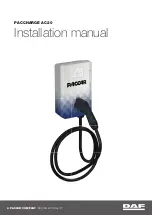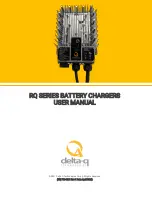
G
Legal notice
This is a publication by Conrad Electronic SE, Klaus-Conrad-Str. 1, D-92240 Hirschau (www.conrad.com).
All rights including translation reserved. Reproduction by any method, e.g. photocopy, microfilming, or the capture in electronic data
processing systems require the prior written approval by the editor. Reprinting, also in part, is prohibited. This publication represent
the technical status at the time of printing.
© Copyright 2016 by Conrad Electronic SE.
DISPOSAL
a) Product
The product must not be disposed of with the household waste.
Please dispose of the product, when it is no longer of use, according to the current
statutory requirements.
b) Rechargeable batteries
As the end user, you are required by law (Battery Ordinance) to return all spent rechargeable
batteries; disposal of them in the household waste is prohibited.
Rechargeable batteries containing hazardous substances are labelled with the sym-
bol shown to indicate that disposal in household waste is forbidden. The symbols of
the critical heavy metals are: Cd=cadmium, Hg=mercury, Pb=lead (the marking can
be seen on the accumulators, e.g., underneath the refuse bin symbol shown on the
left).
You can return used rechargeable batteries free of charge to any collection facility in your
local authority, to our stores or to any other store where rechargeable batteries are sold. You
thereby fulfil your statutory obligations and contribute to the protection of the environment.
TECHNICAL DATA
Operating voltage .................................220 - 240 V/AC (50 Hz)
End-of-charge voltage 6 V battery ........7.2 V / 7.35 V
End-of-charge voltage 12 V battery ......14.4 V / 14.7 V
Charging current ...................................0.5 A / 1 A
Charge control ......................................LED indicator
Operating conditions ............................. 0 °C to +45 °C, 10% to 85% relative humidity, non-
condensing
Storage conditions ................................ -20 °C to +60 °C, 10% to 90% relative humidity, non-
condensing
Dimensions (L x W x H) ........................82 x 48 x 72 mm
Weight ..................................................190 g
Usable rechargeable batteries
Battery type ..........................................Lead-gel, lead-acid, lead-fleece
Battery voltage ......................................6 V / 12 V
Battery capacity ....................................1.2 to 14 Ah
CONNECTION, STARTUP, CHARGING
1. Connect the charger to a mains socket (220 - 240 V/AC). The LED for the operating
display (1) is lit.
2. Now connect the red alligator clip at the charging cable to the plus pole, the black alligator
clip to the minus pole of the battery.
3. Choose the voltage range “6 V battery” (3) or 12 V battery (4) intended for charging by
pressing the “Mode” button (2) on the charger. If the battery is connected, not defective
(tristated/disconnected) and connected to the mains, charging process starts automati-
cally after a few seconds. The LED for charge control (5) is lit.
The charger will automatically select the correct voltage range if the battery is intact.
This is the case if a 6 V battery has a voltage between 2 - 7.5 V and a 12 V battery a
voltage between 8 - 15 V.
If the battery is charged at low temperatures (below 10 °C), press the “Mode” button (2)
again until the snowflake symbol (6) is lit. The end-of-charge voltage is then 7.35 V for
a 6 V battery (14.7 V for a 12 V battery) and is used for batteries of the type lead-gel,
lead-acid or lead-fleece. Use this charger programme exclusively at low temperatures,
otherwise the connected batteries may be overloaded and damaged.
Never press the Mode button (2) during the charging process, as it would change
the charging programme and thereby the charging current and end voltage. This
may lead to corruption of the connected battery. There is also a risk of explosion of
the battery!
4. As soon as the battery is fully charged, the “Charge control” LED (5) goes out and the
“FULL” LED (7) switches on. The charger now supplies only little current to the battery for
trickle charging (trickle charging).
Charging processes vary in length. The charging process of a large battery with a
capacity of e.g., 14 Ah, depending on the condition of the battery (battery is old or new;
battery is flat or deeply discharged, etc.), can in fact take more than a day.
If the open-circuit voltage of a 6 V battery is in the range from 2 V to 5.3 V (12 V
battery between 8.5 V and 10.5 V), the charging process begins with a special
refreshing programme (pulse charging). As soon as the battery voltage of a 6 V
battery exceeds 5.3 V (10.5 V for a 12 V battery) again, the charger switches over
to the normal charging mode.
5. Complete the charging process as soon as the “FULL” (7) switches on. Remove the bat-
tery from the charger and pull the charger out of the mains outlet.
SAFETY DEVICES
a) Polarity reversal protection
The charger has an integral reverse polarity protection. If the charger is connected to a
battery with reversed polarity, the LED of error indication (8) lights up. Check polarity of the
battery and connection cable.
b) Short-circuit protection
When connecting to a battery, the charger check is a short-circuit is present. The charger
does not start if this is the case. Check the polarity and the open-circuit voltage of the battery
as well as the condition of all connected cables.


























